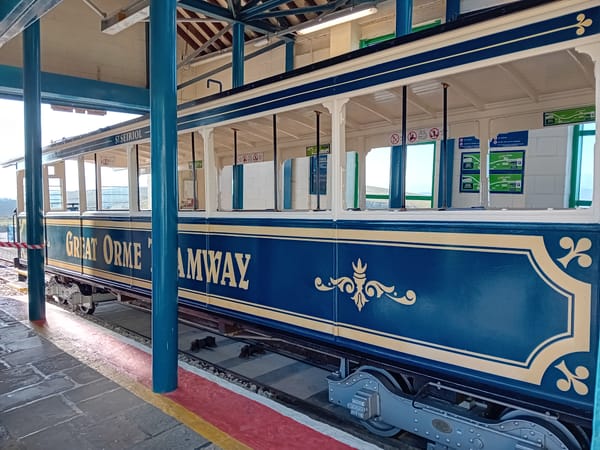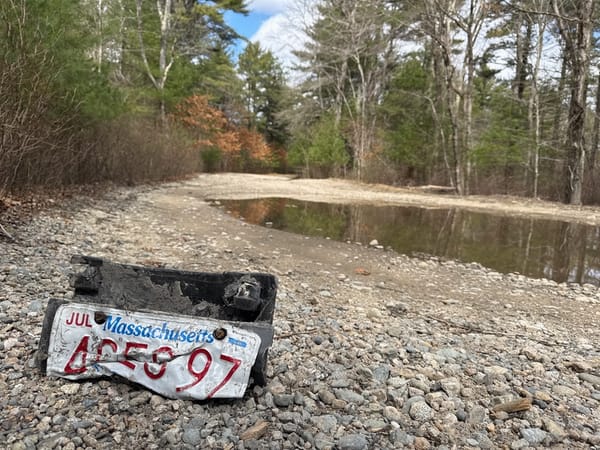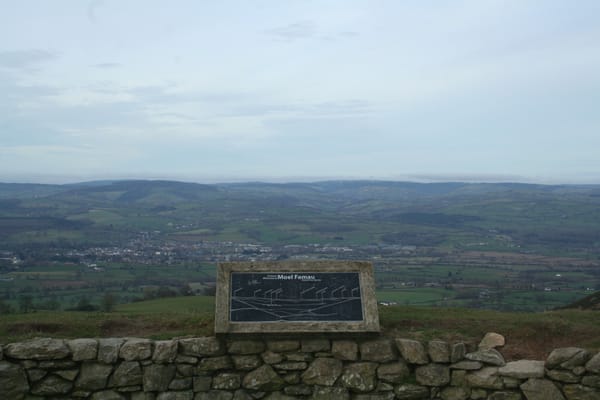US-6992 JL Curran State Park
A small but comfortable fishing hole along the northern border of Rhode Island, JL Curran has some of the best antenna masts in New England!
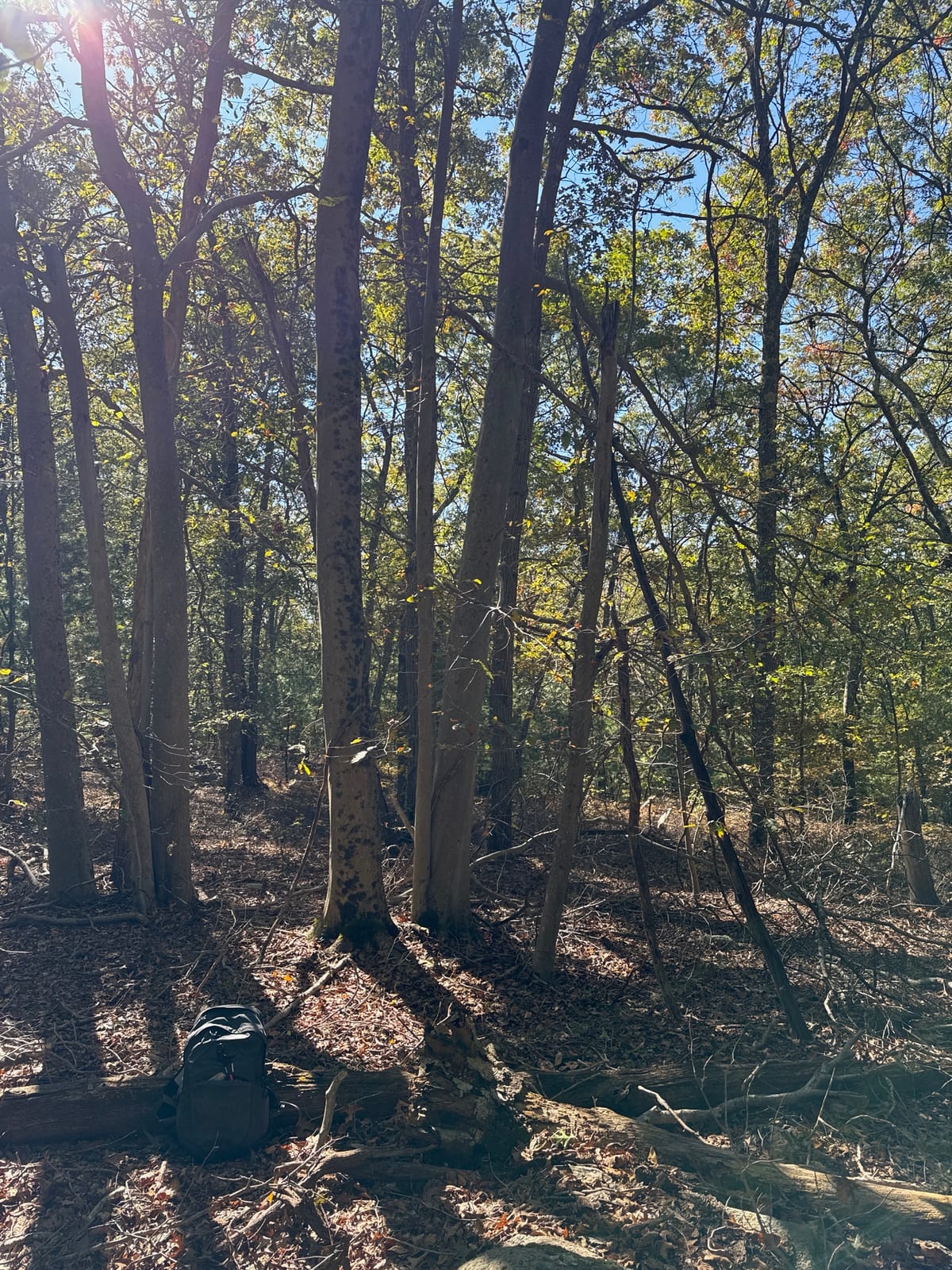
JL Curran is primarily a fishing site, with two ponds that are stocked by the RI environmental agency. It's relatively small, around 300 acres including the ponds. There are two small parking areas on the east side of the park, take Hope Road to Laten Knight Road and look for the spots on the left, prior to the bend in the road.
I'd intended to activate this site two days earlier, and had driven out to Hope, about 30 minutes away, in hopes of a relatively quick activation at a new park, quick because the weather was not looking great, chilly and a threat of showers with gray, cloudy skies. I arrived, found parking, and hiked in for 15 minutes or so and started looking for a spot to hang my antenna.
Antenna.
I'd forgotten to bring an antenna with me! I've been using hamstick dipoles lately and usually I strap them to my backpack, but I've been out in the woods for non-radio hiking a few times since the last activation and just didn't think about it. There was no way I was going to fashion an antenna out of sticks, so I turned around, hiked out, and drove back home laughing at myself. No sense in getting pissed or annoyed, that won't make an antenna appear!
When I got home it was late, around 4pm, but I really did want to go out and do an activation, and I ended up at US-4702 Gilbert Hills State Forest, which is close by, operating in the rain.
But that's a different story! Two days later I was in the car, ever Hopeful. No, I don't intend to stop with the Hope puns. This day was sunny, though still a bit chilly, and I found my three-car parking spot occupied in part by a RI Environmental officer, which made me happy that I was wearing my orange blaze – it's a $100 fine if you get spotted without one in the woods this time of year. I verified that there was in fact an antenna on the pack and headed in. The trail is maintained and fairly wide, and there are just a few of them so it's tough to get lost. Every once in a while you'll spot initials carved onto the beech trees, or a mouldering couch or old campfire.
After fifteen minutes, about half a mile, I picked what looked like a sunny spot amid a group of beech and pine. I climbed up the small hill, put down my pack, and turned around to see the mast featured above. Can you spot it? It's that big dark stick on the right side of the photo, leaning up against a tree. I LOVE using poles like this as masts! This one was practically straight, around two inches in diameter at the base and 1 inch or a little more at the top. I had seven feet of coax remaining after stretching my 25-foot cable top to bottom, so it is 18 feet tall. It has to be one of the best masts I've found so far.
I like using hamstick dipoles, and I brought both a 20m and a 10m set with me for this activation. It's a simple matter to lash a dipole mounting plate to the pole – I use zip-ties in most cases. Here's a look at this install:
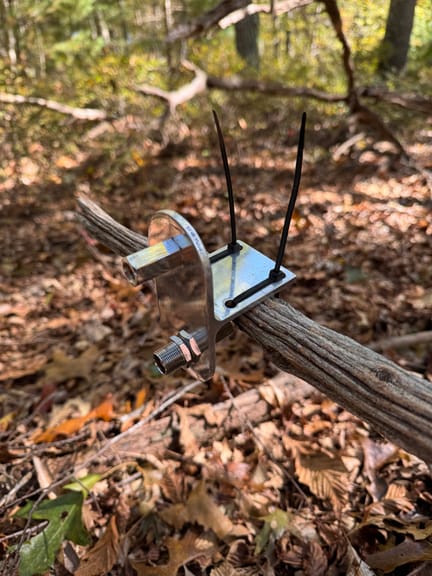
Once the dipole elements are attached, the mast is raised and the bottom inserted into whatever is handy and sturdy. This pole sat in the crook of a large, downed branch. The crook was oriented such that I didn't need any additional support, but when I do I'll use a large rock or handy log to fill the role.
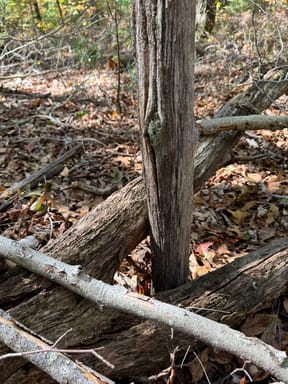
This is the antenna raised and secured, the feed point is 18 feet in the air. It fell just once, only because I was wandering around like I tend to do and snagged the coax with my foot.
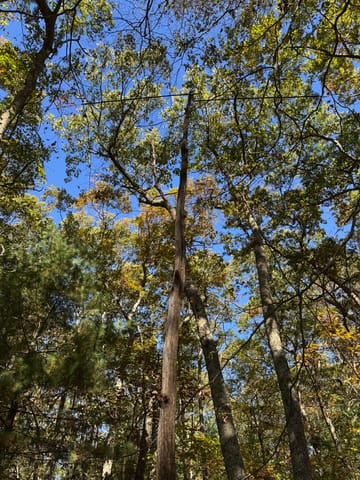
It takes about 15 minutes to find a good pole and get everything set up. When I revisit a site I'll often have a pole stashed from the previous journey, which saves quite a bit of time. I'm developing a network of poles in the area, to be sure. Maybe I should put Airtags on them so everyone, including me, can find them again!
Operating was a delight. I spent some time on 10m FT8, running up 20 QSOs before switching out the 10m dipole for the 20m version. It was one of those easy activations where my first CQ was answered, and then it was just a steady stream of customers, one after another. I use SDR-Control for iPad to run the rig, and it auto-logs FT8 contacts, so while the QSO machine was running I explored the area, which is something I do pretty much every time I'm out. I know auto-logging is a minor controversy in the FT8 world, but I love it and use it all the time.
Once the 20m sticks were up I pulled out the Putikeeg paddles and switched to CW. Conditions were good, and I apparently picked a clear frequency, and for the next hour ran off 32 CW QSOs, which I thought was a good rate. I knew I was done when I started making mistakes on the paddles because my hands were cold and crampy. I really enjoy contacts with folks I've worked before, and the fellow who wanted to chat a bit was a welcome break. When it was done I had 50 in the log and was definitely ready to pack up and head home,
Here's the obligatory operating position shot...
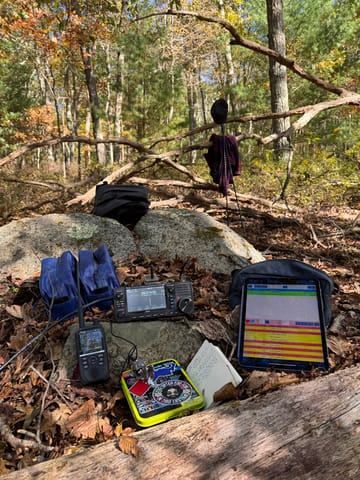
I'll talk more about the equipment in a subsequent post. The blue bags are just shaving-kit bags, $10 at the local discount store. There's a portable DStar station in there, too. All for another day!
ID: US-6969 JL Curran State Park
Location: Hope, Rhode Island, Providence County
Activation date: 15 October 2024
Activated by: W1GRD
